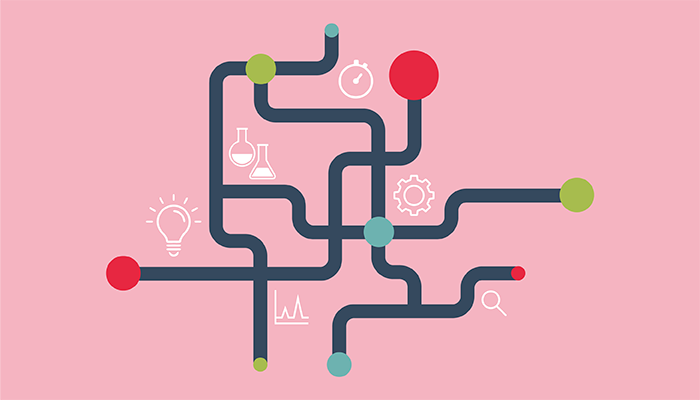
Back to the roots. Traditional Chinese medicine goes back at least 2,000 years and is famous for its use of natural ingredients, such as ginseng root and Valeriana jatamansi. The latter has attracted the interest of Haochang Chen and colleagues, given the difficulties researchers have had analyzing the plant with conventional tools, such as high-performance liquid chromatography (HPLC). The team pioneered an online extraction system using two chromatographic separation methods – conventional HPLC and supercritical fluid chromatography (SFC) – characterizing over 117 different compounds, of which 33 were reported for the first time. The collected data, according to the authors, “enrich our understanding of the components of Valeriana jatamansi and prove that the developed online platform in this study is a robust approach for accelerating working efficiency in comprehensively analyzing complicated samples.”
Nothing goes to waste. To minimize the waste produced by crude oil refining, one of its main by-products – petroleum coke – can be repurposed as a fuel and as carbon anodes for steel making. However, only material that is low in sulfur can be used – and analysis is costly. A low-cost and simple sulfur determination method that combines ion chromatography and pyrohydrolysis was developed by a research team at the Federal University of Santa Catarina, Brazil. The method was optimized using a Box-Behnken approach, ultimately demonstrating satisfactory accuracy and achieving a detection limit as low as 0.8 mg kg−1. “The proposed study offers a simple, reliable, and attractive method for determining sulfur in petroleum coke samples using IC and pyrohydrolysis as sample preparation,” concluded the team.
Wine and… AI. Researchers from the University of Geneva, Switzerland, combined machine learning with gas chromatography to characterize the age and origin of Bordeaux 12 red wine samples. The team recovered the estates with 100 percent accuracy and vintages with up to 50 percent accuracy. “Interestingly, we observed that the entire chromatogram is informative with respect to geographic location and age, thus suggesting that the chemical identity of a wine is not defined by just a few molecules but is distributed over a large chemical spectrum,” said the authors.
Accelerating drug discovery. Krzesimir Ciura from the Medical University of Gdańsk, Poland, investigated the molecular interactions between xenobiotics and phospholipids – an interactivity crucial for effective drug design and development. Using immobilized artificial membrane chromatography (IAM) – a promising alternative to standard lipophilicity analysis, Ciura proposed an interpretation model based on quantitative structure-retention relationships (QSRR). From a data set of 508, the model was validated and according to the author the results confirm “great predictive abilities.”
Researchers present a new approach to gain additional insights in polymer characterization using size-exclusion chromatography with triple detection – and offer an open access tool. Link
Scientists reveal changes in human sweat metabolome through gas chromatography coupled with high-resolution mass spectrometry – enhancing the diagnosis of sleep apnea and intermittent hypoxemia. Link
Researchers combine nile red staining, flow cytometry, and pyrolysis gas chromatography-mass spectrometry to identify small microplastics, providing a more complete picture to help improve real-world applicability of risk assessments. Link
Chromatographic analysis of hydrocarbons in bone and cave samples in Richards Spur, Oklahoma, indicates that the source originated in the Devonian age – 21 million years older than previous samples and the oldest identified 3D fossilized skin thus far. Link




